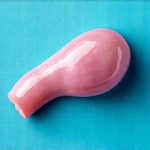Experiencing a flare during your period – a sudden worsening of chronic symptoms, or even entirely new discomfort – can be incredibly disruptive and concerning. It’s common for conditions like endometriosis, irritable bowel syndrome (IBS), fibromyalgia, migraines, and pelvic pain to seem amplified in sync with the menstrual cycle. This isn’t necessarily surprising; hormonal fluctuations inherent to menstruation significantly impact the nervous system, inflammation levels, and even gut motility, all of which can exacerbate existing sensitivities or trigger new ones. Understanding why this happens is the first step toward managing these challenging periods and regaining a sense of control over your body.
The connection between menstrual cycles and symptom flares often feels bewildering, but it’s rooted in complex physiological processes. Estrogen and progesterone levels rise and fall throughout the cycle, influencing pain perception, immune function, and gastrointestinal activity. For example, rising estrogen can sometimes increase inflammation, while declining progesterone might affect mood regulation and bowel habits. It’s important to remember that everyone experiences these hormonal shifts differently, leading to a wide range of responses. Recognizing your individual pattern – when flares are most likely to occur within your cycle – is invaluable for proactive self-care and seeking timely support.
Understanding the Flare: What’s Happening in Your Body?
A flare isn’t simply “bad timing”; it reflects a real, physiological response to hormonal changes. The inflammatory component is often key. Estrogen, while essential for many bodily functions, can also promote inflammation when levels fluctuate rapidly or are disproportionately high. This can worsen chronic pain conditions like endometriosis, where inflammation already plays a significant role. Similarly, fluctuations in estrogen and progesterone can impact the gut microbiome, potentially leading to increased intestinal permeability (“leaky gut”) and IBS symptoms. The nervous system is also heavily involved; hormonal shifts can alter pain thresholds and increase sensitivity to stimuli.
Beyond hormones, menstrual cycles affect neurotransmitters like serotonin, which play a crucial role in mood regulation. Declining progesterone levels, particularly before menstruation begins, have been linked to increased anxiety, irritability, and even depression – all of which can amplify the perception of pain and discomfort. It’s also worth noting that changes in blood flow during your period can contribute to pelvic pressure and cramping, potentially triggering or exacerbating existing pain conditions. Identifying these interconnected factors is vital for developing a holistic management strategy. If you suspect underlying bladder issues, it may be helpful to read your uroflowmetry report as a patient.
The specific symptoms experienced during a flare vary widely depending on the underlying condition(s). Common examples include:
– Increased chronic pain intensity (endometriosis, fibromyalgia)
– Digestive issues like bloating, diarrhea, or constipation (IBS)
– Headaches or migraines
– Fatigue and low energy levels
– Mood swings, anxiety, or depression
– Pelvic pain and cramping
Managing the Flare: Strategies for Relief & Prevention
Managing a flare requires a multifaceted approach that addresses both immediate relief and long-term prevention. In the moment, prioritize self-care practices that soothe your nervous system and reduce inflammation. This might include gentle movement (yoga, walking), heat therapy (heating pad, warm bath), mindfulness exercises, or simply resting in a quiet space. Over-the-counter pain relievers – always used as directed – can provide temporary relief, but should not be relied on as a long-term solution. Hydration is also critical; water helps flush out toxins and supports overall bodily function. For those experiencing recurring UTIs, understanding UTI risk during antibiotic use can be beneficial.
For proactive prevention, consider tracking your cycle meticulously to identify patterns in flare occurrences. This data can help you anticipate potential issues and adjust your lifestyle accordingly. Dietary modifications – reducing inflammatory foods like processed sugars, caffeine, and alcohol – may also be beneficial. Stress management techniques (meditation, deep breathing exercises) are crucial for regulating the nervous system and minimizing hormonal imbalances. Finally, open communication with your healthcare provider is essential; discussing your experiences can lead to tailored treatment plans and support.
Identifying Your Personal Triggers
Pinpointing your individual triggers is a key step towards managing flares. Keep a detailed symptom diary that includes:
– Date and time of symptoms
– Severity level (scale of 1-10)
– Associated activities or events
– Dietary intake
– Stress levels
– Phase of your menstrual cycle
Look for patterns and correlations between your symptoms and these factors. For example, do flares consistently occur in the days leading up to menstruation? Are certain foods or activities associated with increased symptom intensity? Recognizing these triggers allows you to make informed choices and proactively minimize potential flare-ups. Don’t underestimate the power of self-awareness – it’s a crucial tool for taking control of your health.
Building Your Self-Care Toolkit
A robust self-care toolkit is essential for navigating flares effectively. This isn’t about indulging in occasional treats; it’s about establishing consistent practices that support your physical and emotional wellbeing. Consider incorporating the following:
– Restorative activities: Reading, listening to music, spending time in nature.
– Gentle movement: Yoga, tai chi, walking, stretching. Avoid strenuous exercise during a flare.
– Heat therapy: Heating pad on abdomen or lower back, warm bath with Epsom salts.
– Mindfulness and meditation: Guided meditations, deep breathing exercises.
– Hydration: Drink plenty of water throughout the day.
– Nutritious diet: Focus on anti-inflammatory foods like fruits, vegetables, and healthy fats.
Tailor your toolkit to your specific needs and preferences. Experiment with different techniques to find what works best for you. Remember that self-care is not selfish; it’s a vital investment in your health and wellbeing. When experiencing discomfort during menstruation, consider how to handle a UTI during periods.
When to Seek Professional Help
While many flares can be managed at home, there are times when seeking professional help is crucial. Consult your healthcare provider if:
– Flares are becoming more frequent or severe.
– Over-the-counter pain relievers are not providing adequate relief.
– Symptoms are significantly impacting your daily life and ability to function.
– You suspect an underlying medical condition may be contributing to the flares.
– You’re experiencing new or concerning symptoms (e.g., heavy bleeding, fever).
Don’t hesitate to advocate for yourself and seek a second opinion if you feel your concerns are not being adequately addressed. A healthcare provider can help diagnose any underlying conditions, develop a personalized treatment plan, and provide support throughout the process. Remember that you’re not alone, and there are resources available to help you navigate these challenges.





















